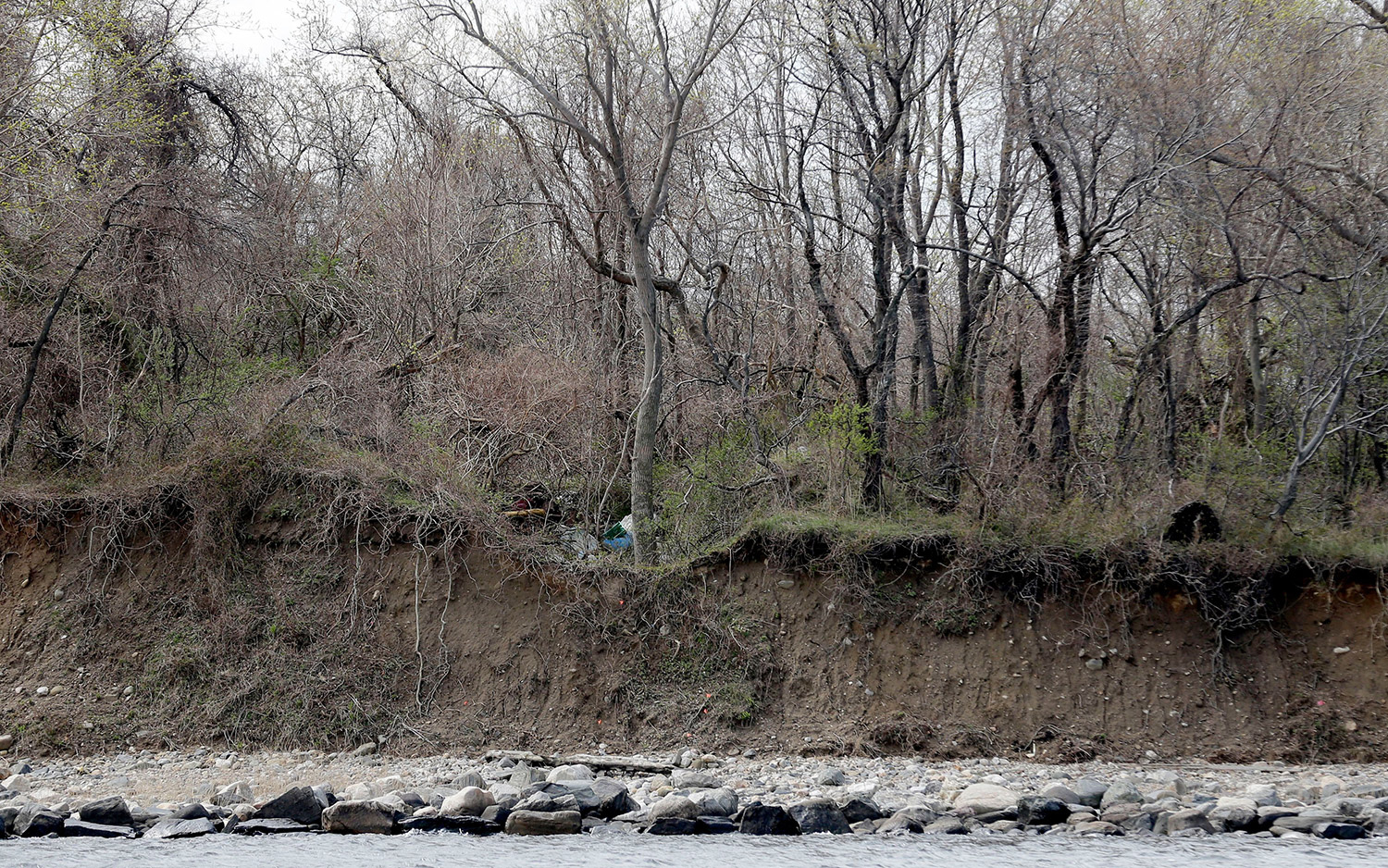Bones Exposed on NYC 'Island of the Dead' Where 1 Million Bodies Rest

New York City goes by many nicknames: the Big Apple, Gotham, Empire City and the City That Never Sleeps, to name a few. But one corner of the city's Long Island Sound has a more gruesome moniker: the Island of the Dead.
Hart Island, a vast burial site established in the 19th century, holds approximately 1 million bodies, many of them infants. And some of those remains are making a grisly reappearance. [11 Famous Places That Are Littered with Dead Bodies]
Erosion at the site recently uncovered dozens of skeletons. On April 23, officials collected 174 bones from the beach on the island's shoreline, where they likely tumbled after falling from a nearby hillside, CBS New York reported on April 24.
Since 1868, the 101-acre (nearly 409,000 square meters) Hart Island has served as New York's official potter's field: a place where people are buried when they are unidentified or unclaimed, or when they or their families can't afford a funeral. Burial records date to May 1881, and people are interred on Hart Island to this day, with 67,141 bodies buried there since 1980, according to the Hart Island Project, an online resource for preserving the names and stories of the individuals consigned to mass graves.

Hart Island is maintained by the New York City Department of Correction (DOC), and prisoners at Rikers Island — the city's island jail complex on the East River — bury the bodies. Melinda Hunt of the Hart Island Project visited the island in mid-April and photographed many of the exposed remains from a boat; she heard about the unsettling scene from DOC officers, who referred to the area as "bones beach," Hunt told CBS New York.
"Skeletal remains are literally just coming out of the earth," Hunt said.
Forensic anthropologists with the New York City Office of the Chief Medical Examiner (OCME) later inspected the site, marking the locations of the exposed bones with flags and collecting scattered remains that included 16 pelvises, 31 leg bones, six skulls and six jawbones, the Associated Press (AP) reported today (May 3).
Sign up for the Live Science daily newsletter now
Get the world’s most fascinating discoveries delivered straight to your inbox.
When a person dies in New York, the OCME assumes custody of the individual's remains; if they are unclaimed or unidentified, the remains are then turned over to the DOC for burial on Hart Island, according to the DOC website. Since 1977, the DOC has maintained an online database of all Hart Island burial records. A designated part of the island is open to the public, and the deceased's family members may visit graves. Both types of access must be arranged in advance and are available only one day a month.
And when families do come to pay their respects, they find no headstones or individual graves marking the places where their loved ones' bodies lie. Adults who are laid to rest on the island are buried in plain pine coffins that are piled one on top of the other, while infants are interred in containers the size of shoeboxes, according to the AP.
In recent years, powerful storms and floodwaters have taken a heavy toll on the island, where as many as 1,000 bodies are still buried each year. This has hit the older burial areas particularly hard. Archaeologists will now conduct monthly visits to inspect vulnerable sites, and plans are underway to stabilize eroded zones on the island's shoreline, with the Federal Emergency Management Agency (FEMA) providing $13 million for the project, CBS reported.
Original article on Live Science.

Mindy Weisberger is an editor at Scholastic and a former Live Science channel editor and senior writer. She has reported on general science, covering climate change, paleontology, biology and space. Mindy studied film at Columbia University; prior to Live Science she produced, wrote and directed media for the American Museum of Natural History in New York City. Her videos about dinosaurs, astrophysics, biodiversity and evolution appear in museums and science centers worldwide, earning awards such as the CINE Golden Eagle and the Communicator Award of Excellence. Her writing has also appeared in Scientific American, The Washington Post and How It Works Magazine. Her book "Rise of the Zombie Bugs: The Surprising Science of Parasitic Mind Control" will be published in spring 2025 by Johns Hopkins University Press.









